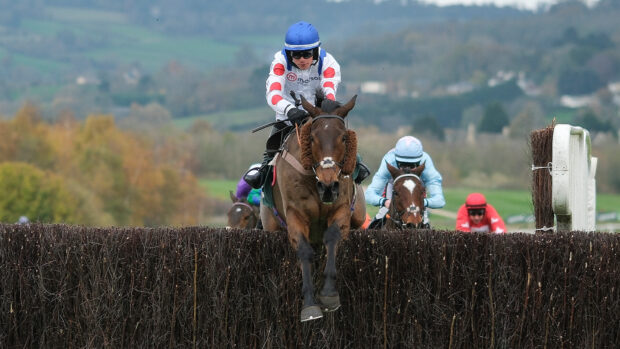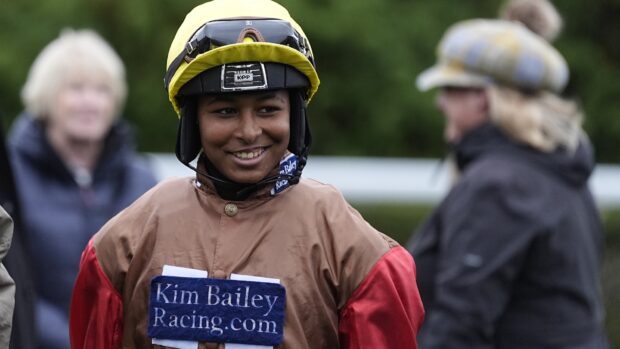The new racing whip rules that came into force in Britain this year have been amended following a six-month review – as the British Horseracing Authority (BHA) said it is continuing to see a reduction in the rate of offences.
The review formed part of the “ongoing dialogue” between the BHA, the Professional Jockeys Association (PJA) and jockeys, which started before the introduction of the new rules and has resulted in a number of alterations.
The changes focus around the penalties for using the whip above the permitted levels. Under the rules, which were introduced in jump racing on 6 February, and on the Flat on 27 March – both following soft launches prior to these dates – the number of times a whip may be used in a race was reduced to a maximum of seven times in a jump race and six times in a Flat race.
Under the amendments as of 31 July, if a rider has been found to have used the whip once above the permitted level, the minimum penalty may be reduced dependent on the race type and rider’s previous record.
Other changes include the races in which a double penalty for use of the whip above the permitted level will apply. Previously this applied to all class one or two races, but under the new framework it will apply to all class one and some class twos.
Riders will now be referred to the BHA judicial panel for “totting up” of whip offences after four, instead of three, in a six-month period.
If a jockey has exceeded the maximum threshold for whip use by just one use, now they may elect to have the potential breach dealt with on the day by raceday stewards, instead of waiting for the whip review committee (WRC) to meet and assess the ride. In these cases the jockey will waive the right to appeal any decision.
The WRC will now only be able to retrospectively review a ride within a maximum of seven days, except where it involved a potential horse disqualification, which may be considered at any time. When considering whether a rider has breached the rules, the WRC may in “exceptional circumstances” exercise discretion and discount individual uses before the starting line, providing the use was “reasonable, proportionate, and clearly and equivocally for a corrective purpose only”.
WRC chair Sam Angell said the changes reflect an ongoing process to “improve the new whip rules and penalties, while retaining the original objectives, to ensure more judicious use of the whip for encouragement, improve the perceptions of the whip and ensure the outcomes of the races are fair”.
“The BHA remains extremely grateful to the PJA and the senior riders who have engaged so constructively with this process. This dialogue will remain ongoing,” he said.
“We continue to see a reduction in the rate of offences, which is a testament to the measures being taken by the jockeys as they continue to adapt to the new rules, for which they deserve great credit.”
Roly Owers, World Horse Welfare chief executive, told H&H it is “sensible” to keep rules under review to “best ensure they are fit for purpose, especially ones that have been recently implemented”.
“However, the real test for the whip rules is whether they are having an overall impact in significantly reducing the number of rule breaches and it is still too early to assess this,” he said.
“World Horse Welfare still believes that the whip in racing should not be permitted for encouragement, but ultimately it is for racing to justify why this use is in the interest of the horse, and having an effective system to minimise transgression must be at the heart of this.”
The BHA has released six-month data of referrals to the judicial panel and offences since the introduction of the new rules. Out of 37,428 rides there were 425 referrals, of which 360 were found to be breaches. The offence types included 219 above the permitted level, 79 without giving the horse time to respond, 15 above shoulder height and one excessive force. 55% of the offences in the review period were committed by professional jockeys.
“We continue to see a reduction in the rate of offences, which is a testament to the measures being taken by jockeys as they continue to adapt to the new rules, for which they deserve great credit,” said Sam.
A PJA spokesman said the organisation is “pleased” that “extensive negotiations” with the BHA over the past six months have resulted in the penalty reductions and other amendments, “that mean sanctions are now less onerous for jockeys”.
Dale Gibson, PJA interim chief executive, told H&H a “highly respected, talented and knowledgeable group of riders” took part in the review; Flat jockeys Ryan Moore, William Buick, Luke Morris and Richard Kingscote, and National Hunt jockeys Bryan Hughes and Harry Skelton.
“We will continue to work with the BHA to review all aspects of the rules and sanctions, with the plan to meet again in the autumn to discuss any further potential amendments,” he said.
“The process has been time-consuming, however we believe the alterations to be a step in the right direction.”
You might also be interested in:

Last-minute changes to new whip rules for 2023

New whip rules to roll out in early 2023

Subscribe to Horse & Hound magazine today – and enjoy unlimited website access all year round
Horse & Hound magazine, out every Thursday, is packed with all the latest news and reports, as well as interviews, specials, nostalgia, vet and training advice. Find how you can enjoy the magazine delivered to your door every week, plus options to upgrade your subscription to access our online service that brings you breaking news and reports as well as other benefits.



